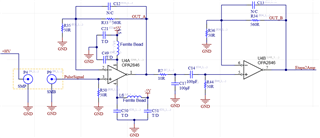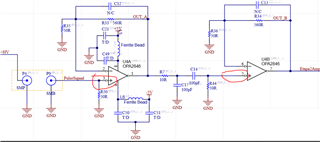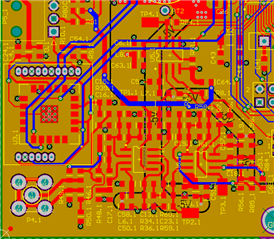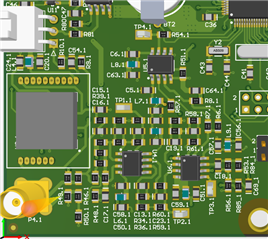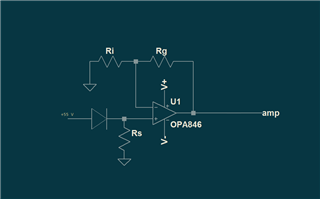Other Parts Discussed in Thread: OPA695, OPA855, LMH6629, OPA847, OPA846
I am using an MPPC with voltage amplification with the circuit shown below. The circuit is a pulse shaper to count photons, it counts with 4 amplifing stages (OPA 2846) and a comparator (LT1719) at the end.
The MPPC is powered with +55 V through a coaxial cable and pulse signal is collected by another coaxial cable.
MPPC manufacturer told me that the ideal bandwith is up to 300 MHz. The problem is that with this configuration i´m having too much gain and a wide bandwith.
I´ve made different boards and in all of them I´ve had different issues.
- First I started with 2 different boards both of 2 layer and struggled with the configuration to reduce noise until I have a good signal at the end. For both boards i got two different configurations.
- Then i moved to a 4 layer board(1:-Signal,2:-Ground,3:-Power(+5V,-5V,3.3V),4:-Signal) to reduce noise effect. I copied the confiuration used in the 2 layer board but again i got an oscilation near 100 MHz. Finally i removed this oscilation adding a 10 ohm and 100 pF at the output of each opAmp to compensate the peak gain, reducing AB.
As you can see i keept the gains of the stages near 10, the resistors seen by the opAmp at V+ and V- are of 50 ohms to keep them matched, the 1kohm resistor seen by the LT1719 comparator are also matched. I keep the traces as small as posible and try to avoid jumping from layer 1(signal) to layer 4(also signal).
I want to know if there is a PCB routing recomendation and opAmp stages configuration that could improve the SNR and avoid unwanted oscilations.
